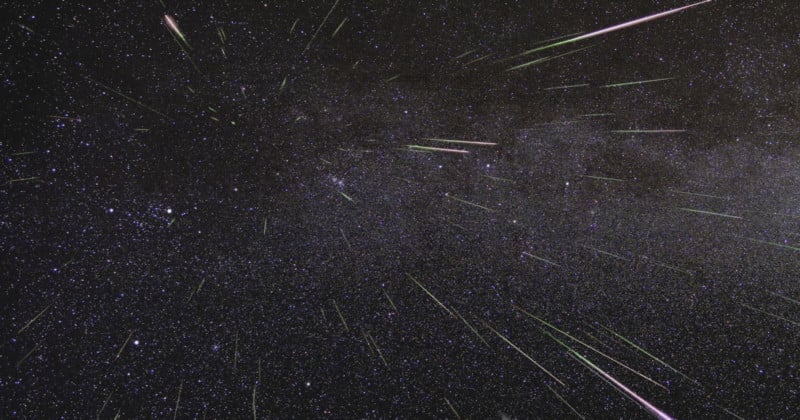What You Need to Know About the Perseid Meteor Shower This Weekend

The Perseid Meteor Shower will peak this weekend, beginning August 11th and going into the morning of August 12th.
The Perseids is one of the most visible and strongest annual meteor shower events from mid-July to mid-August and will reach its peak intensity on August 11th. Typically, photographers and casual viewers could expect hundreds of “shooting stars” per hour during the peak. Last year’s shower was great for photos.
This year’s shower will be slightly affected by a half-waxing Moon, although the Moon will set behind the horizon right around when the shower is expected to begin. The Moon should be out of sight during the event, but some residual moonlight will likely interfere with the shower’s visibility. The best bet for an optimal viewing experience will be watching from an area free of light pollution.
As Earth moves into the debris trail of the Comet Swift-Tuttle, the body responsible for the Perseid meteor shower each year, NASA describes the spectacle as “long wakes of light and color.” The Perseids can also produce larger fireballs that burn brighter and last longer than typical meteor streaks.
For photographers in the Northern Hemisphere looking to capture the action, there are a few steps to take to prepare for the 11th:
The best locations to view Perseids are dark areas, free of light pollution. The darker the area, the better, which could mean driving far from cities and other well-lit areas. According to NASA, pre-dawn hours have the best chances for clear skies, but some meteors could be visible as early as 10 PM. Make sure to check the weather report as well — even though it’s summer, it can still get cold.
It’s always important to pack the right tools for the job. Full-frame cameras typically perform best in low light because of their large sensor, but modern APS-C mirrorless cameras can also handle the job. Use a fast, wide-angle lens of at least f/2.8, a slow shutter speed, and a higher ISO. Finally, make sure to set the mode dial to Manual to prevent unwanted changes to settings. A remote shutter release could also come in handy to prevent any minor shakes from pressing the shutter button.
If you miss the Perseid meteor shower this weekend, the next major meteor shower will be the Gemenids in December.
Image credits: Featured image by NASA/JPL.